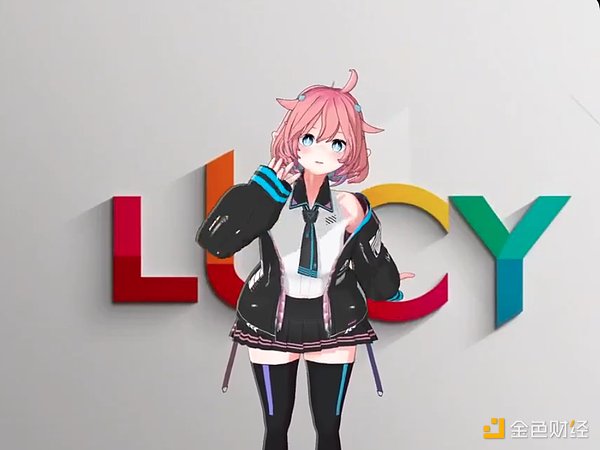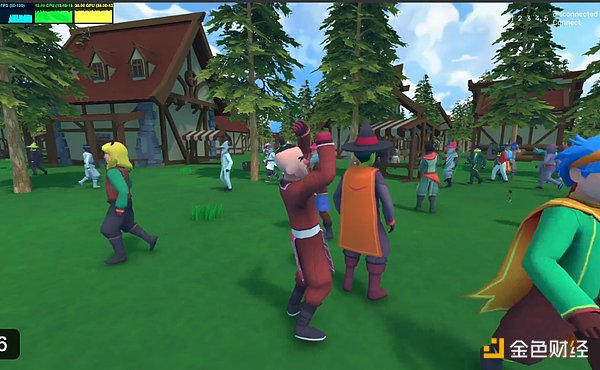Author: 0xJeff Source: X, @Defi0xJeff Translation: Shan Ouba, Golden Finance
The metaverse - a collective concept of a virtual shared space - attracted much attention in the early 2020s due to the rise of the P2E (earn while playing) model and the cyberpunk-style vision of the digital future.
At the time, many projects promised to build a world where your digital identity or NFT can interact, trade, and play games in the on-chain economy. However, many projects ultimately failed to deliver on these promises.
What went wrong in the last cycle?
• Projects raised $10 million to $100 million, but only delivered mediocre experiences.
• The P2E model collapsed due to unsustainable token economics (the model of attracting players by simply issuing tokens simply does not work).
We learned two key lessons from this:
1. Fun and engaging game experience must be prioritized.
2. A sustainable economic system is a must for building persistent virtual worlds.
Fast forward to today: the advent of the proxy chain. Today, with the rise of powerful LLMs (large language models), proxy frameworks, and AI ecosystems, more immersive and engaging experiences are possible.
The Metaverse is no longer limited to human-to-human interactions, but has seen the following trends:
• Agent-to-agent interactions
• Human-to-agent experiences
Imagine watching intelligent agents bargain for a digital asset, collaborate on the creation of an NFT artwork, or negotiate a lower price. These immersive, dynamic interactions go far beyond simply replying or generating content on Twitter.
How do agents evolve?
The development of AI agents fits perfectly with the concept of the Metaverse. Here are the current trends:
• More entertaining and complex personalized agents:
These agents are equipped with advanced analytical and predictive tools, and are no longer just “posting machines”, but can provide deep insights.
• Integration of on-chain functions:
Smart agents are integrating with blockchain protocols to enable autonomous trading, lending, yield farming and other functions.
• 3Dization and improved contextual awareness:
With the advancement of 3D virtual images and environmental perception technology, agents become more lifelike and can interact with users in more meaningful ways.

Building an Agent World
To house these agents, we need world-building infrastructure that enables them to interact with each other and with humans.
• @realisworlds is developing an Earth-like virtual world where agents can evolve, learn, and create their own civilizations over time.

• @hyperfy_io is developing infrastructure for users to customize the metaverse space on the network.

But it’s not enough to just build an immersive environment, we also need critical DeFi infrastructure to support these in-game economies.
The Role of DeFi in the Agent Metaverse
In order for agents to be able to trade, borrow, or manage assets on-chain, the underlying DeFi infrastructure must have the following:
• Powerful enough to handle high-value transactions.
• Have risk management mechanisms in place (e.g., preventing agents from transferring funds to malicious actors).
For example, @gizatechxyz is a great example of DeFi infrastructure that is driving these use cases. Their product ARMA simplifies the complexity of cross-protocol stablecoin yield farming, including monitoring annualized yields (APRs) and managing risk.
Imagine embedding this functionality into an immersive agent world where agents can autonomously handle all operations, from PT cycling with **@pendle_fi** to leveraging Boros’s directionless funding rate strategy.
DeFi-powered agents will make these tools easily accessible to average users, removing complexity while unlocking entirely new opportunities.
Backbone: Decentralized AI Infrastructure
To make the Metaverse truly operational, we need decentralized AI infrastructure running behind the scenes. This is not just about enabling agents to function, but about making them trustworthy.
• Creating a secure execution environment for on-chain interactions.
• Enabling both humans and agents to understand and verify the operations in the agent’s “mind.”
Recall the second and third stages of AI agent transparency that I mentioned in the Chromia article:
• Phase 2: Open access to training data and inference logs — the agent’s “mind” — so people can view, audit, and verify it.
• Phase 3: Transparent model execution through technologies like zkML and opML, enabling community-level verification.
When we get this right, agents will not only become smarter, but also more accountable and secure. This is key to building a metaverse where people can confidently interact with agents at scale.
By then, we will see agents from @TalusNetwork, @virtuals_io, @ai16zdao, @TheoriqAI, @autonolas, @modenetwork and other diverse agents interacting with each other, easily and seamlessly switching between different metaverse worlds - from @realisworldsto @hyperfy_ioto @decentraland, constantly evolving in interaction.
Broader perspective
As the ecosystem matures, we also see AI talent from Web2 begin to flow into the Web3 field:
• @ai16zdao demonstrated the power of open source innovation through the growing number of GitHub stars.
• @virtuals_io is driving adoption through its Agent Sandbox, allowing developers to test the G.A.M.E framework without issuing tokens and gaining insight into the “mind” of an agent.
Act 3: The Metaverse We’ve Been Waiting For
In the next phase, I see the following trends taking shape:
• Personalized agents will become more knowledgeable, specialized, and human.
• Worldbuilding infrastructure will create immersive environments where agents and humans can coexist.
• Decentralized AI infrastructure will mature to provide the trust and security needed for agents to operate autonomously.
• DeFi Agents will unlock new use cases, from yield farming optimization to advanced trading strategies.
• The lines between personalized agents, utility agents, and DeFi agents will blur, forming an all-in-one solution.
• The pace of innovation will accelerate, attracting more developers from outside the crypto industry to further push the boundaries of technology.
Final Thoughts
The Metaverse will no longer have a negative connotation. It is no longer an overhyped buzzword, but is transforming into a dynamic, agent-driven reality. The key pieces are falling into place, and the next generation of virtual worlds will be a new look: immersive, engaging, and powered by AI and DeFi.
This is just the beginning.
 Joy
Joy








